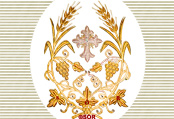
 |
|
||
| Evangelion Dampharshe (The Old Syriac Translation) |
|
The Old Syriac is known in Syriac as Evangelion Dampharshe meaning 'Gospel of the Separated [Evangelists]', in order to distinguish it from the Diatessaron, 'Gospel of the Mixed'. This translation was made at some point between the late second century and the early fourth century by a number of translators. Rather a literal translation, this was a rather free translation from the Greek. A series of revisions took place over a long period of time which brought the Old Syriac into closer line with the Greek. The original translation of the Old Syriac is lost, but we are fortunate to have two lacunous manuscripts which represent two different stages of the revisions: the Sinaiticus palimpsest and the Curetonianus manuscript. Unlike the Diatessaron, the Old Syriac version was unknown to scholarship, not to mention the Syriac Church itself, until the discovery of two manuscripts. The Curetonianus manuscript was acquired, among others, by the British Museum and reached its new home on the first day of March 1843. Some further pages arrived in England and Berlin in the form of fly-leaves to strengthen the bindings of other manuscripts. The original home of the manuscript is Deir as-Surian, 'Monastery of the Syrians,' in Egypt. William Cureton, then assistant keeper of the manuscripts at the British Museum, discovered that the volume contains pre-Peshitto readings and concluded that he had discovered "the identical terms and expressions which the Apostle himself employed,"—an exaggeration. The most interesting characteristic of the Curetonianus manuscript is the unusual order of the Gospels: Matthew, Mark, John and Luke, with Luke following John on the same page. The Sinaiticus manuscript is a palimpsest; that is, a later scribe rubbed off the original writing of the Gospels and wrote a new text on top of it, a popular activity in antiquity when parchment was rare and expensive. The manuscript is preserved at the ancient library of St. Catherine Monastery in Sinai which contains many ancient Syriac manuscripts. This particular manuscript was discovered in 1892 by Agnes Lewis and her twin sister Margaret Gibson, two Scottish widows. They took 400 photographs of the manuscript and sent them to Cambridge, England, where they were deciphered by two English scholars, Bensly and Burkitt, who concluded its affinity with the Curetonianus manuscript. It took many visits to the home of the manuscript in Sinai until the text was deciphered. A chemical reagent was used to help in reading the text, which, alas, contributed to the destruction of the manuscript. Recently, new photographs have been taken by Bruce Zuckermann (University of Southern California) and James Charlesworth (Princeton Theological Seminary) using the latest photographic techniques. Whether new readings will emerge from this endeavor remains to be seen. |
| Copyright © Syriac Orthodox Resources. All Rights Reserved. |
|
Author: George Kiraz, Ph.D. Last Updated: Feb 25, 2001 |